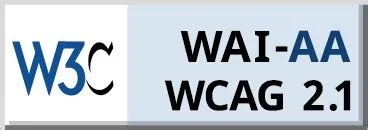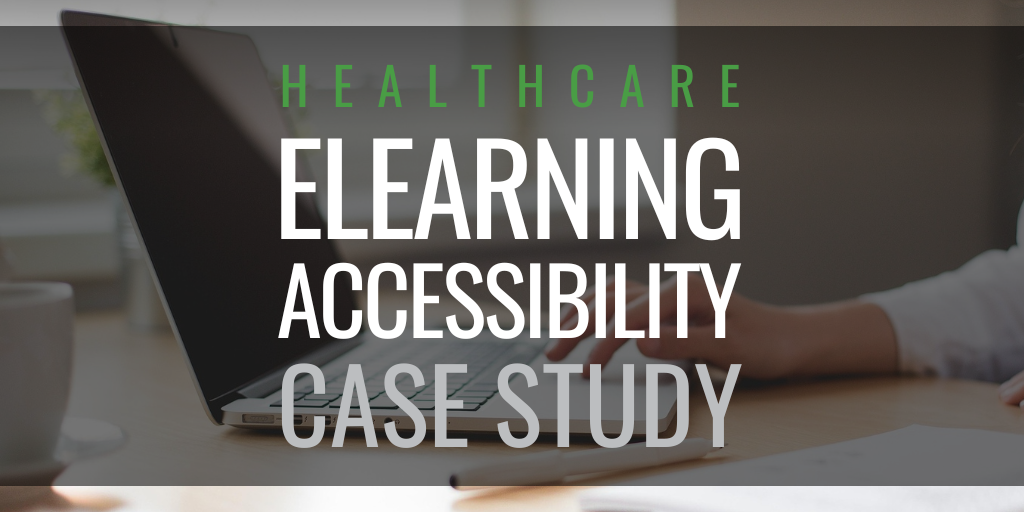Creating an elearning course or video that meets web accessibility requirements is becoming more common, thanks to increasing awareness, industry guidance and government legislation. As stated in the Accessible Canada Act — an act created to foster a barrier-free Canada — one of the objectives is:
Making information and communications technology usable by all.
Web accessibility means making elearning content, web content and video available and usable to every learner of any age, in any state of health, with different needs and abilities. It accounts for text structure, fonts, colours and contrast, alternative (alt) text for images, captions and more.
Designed with accessibility in mind
This is Limestone Learning’s default approach. It is suitable for organizations who would like to begin a journey toward fully accessible elearning but are not currently mandated to do so. Basic web accessibility requirements are addressed through techniques such as:
Simple, straightforward and consistent layouts.
Suitable colour contrast.
Suitable font size and style.
Subtitles for audio and video.
Plain language, aiming for a Grade 8 reading level.
Avoiding use of features (e.g., drag-and-drop activities) that are known to be problematic for those using alternative access methods or assistive technologies.
We also suggest that courses using this approach provide learners with a course transcript as an alternative access method for those using assistive technology.
Designed to meet WCAG web accessibility standards
Web Content Accessibility Guidelines, or WCAG, is an extensive set of guidelines on how to develop accessible electronic content. WCAG 2.1 has three levels of accessibility: A, AA and AAA:
A is the minimum level and is the easiest to meet. For example, using captions for pre-recorded audio and video.
Most organizations aim for the AA level since it makes sure the content is consumable, operable in general, and adapted for those who are visually or hearing impaired. Our clients require at least an AA level which, for example, allows screen readers to convey information effectively.
AAA is the pinnacle of accessibility standards, introducing advanced measures like elevated contrast ratios, enhanced voice command features, and detailed sign language interpretation for multimedia, thereby significantly augmenting digital content accessibility and usability for a diverse user base.
Our Limestone team is experienced in designing elearning course players, course modules, and audio and video elements to meet these standards. We have also created accessibility QA test plans and completed testing and troubleshooting of courses to various accessibility standards.
This involves implementing organization-specific requirements and additional testing/troubleshooting to ensure the course will operate to the level of the standard when hosted on the organization’s learning management system.
Developing accessible elearning courses
If a client opts for web accessibility, the Limestone course author would typically create a course player in the client’s preferred course authoring platform (e.g., Articulate Storyline or Articulate Rise) to the WCAG 2.1 AA standard. During the storyboard handoff meeting we create a QA test plan, and during the course build, we incorporate accessible affordances (and closed captioning is added to any video footage). Once the course is built, we follow a QA test plan to ensure the WCAG functionality works as it should.
Note: To fully comply with the WCAG 2.1 AA standard, any meaningful actions (e.g., speaker demonstrations) recorded in video footage need to be captured in written format for a “described video” (aka “descriptive video”) video script and voiceover need to be produced.
Once the course content is finalized, we also strongly recommend that your project team (or information technology (IT) team) also creates and implements an internal accessibility testing plan to ensure all accessibility features meet your requirements and function as they should within your learning management system (LMS). This is best accomplished by an experienced internal employee and/or native user who will test accessibility on different types of equipment (e.g., screen readers).
This comprehensive approach:
Meets all elements of the required standard level.
Is tested by Limestone to confirm adherence.
Is tested by client native users/accessibility experts to ensure it operates with assistive technology when hosted in the LMS.
Following this approach prioritizes inclusivity and accessibility in elearning to ensure every learner can effectively engage with the content, aiding your organization in fostering a more inclusive learning environment.
To learn more about how we can support your organization’s elearning accessibility initiatives, contact us here.







